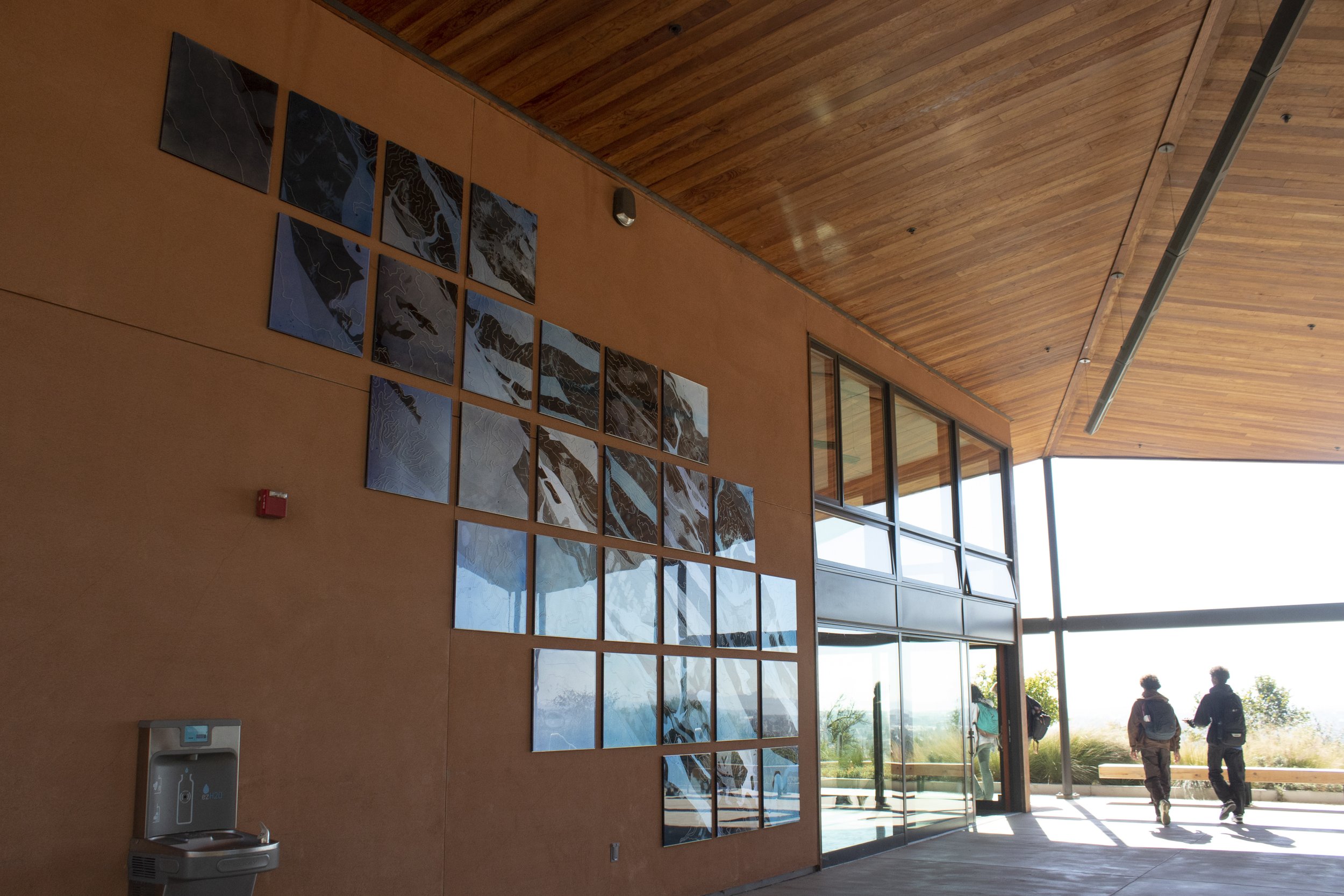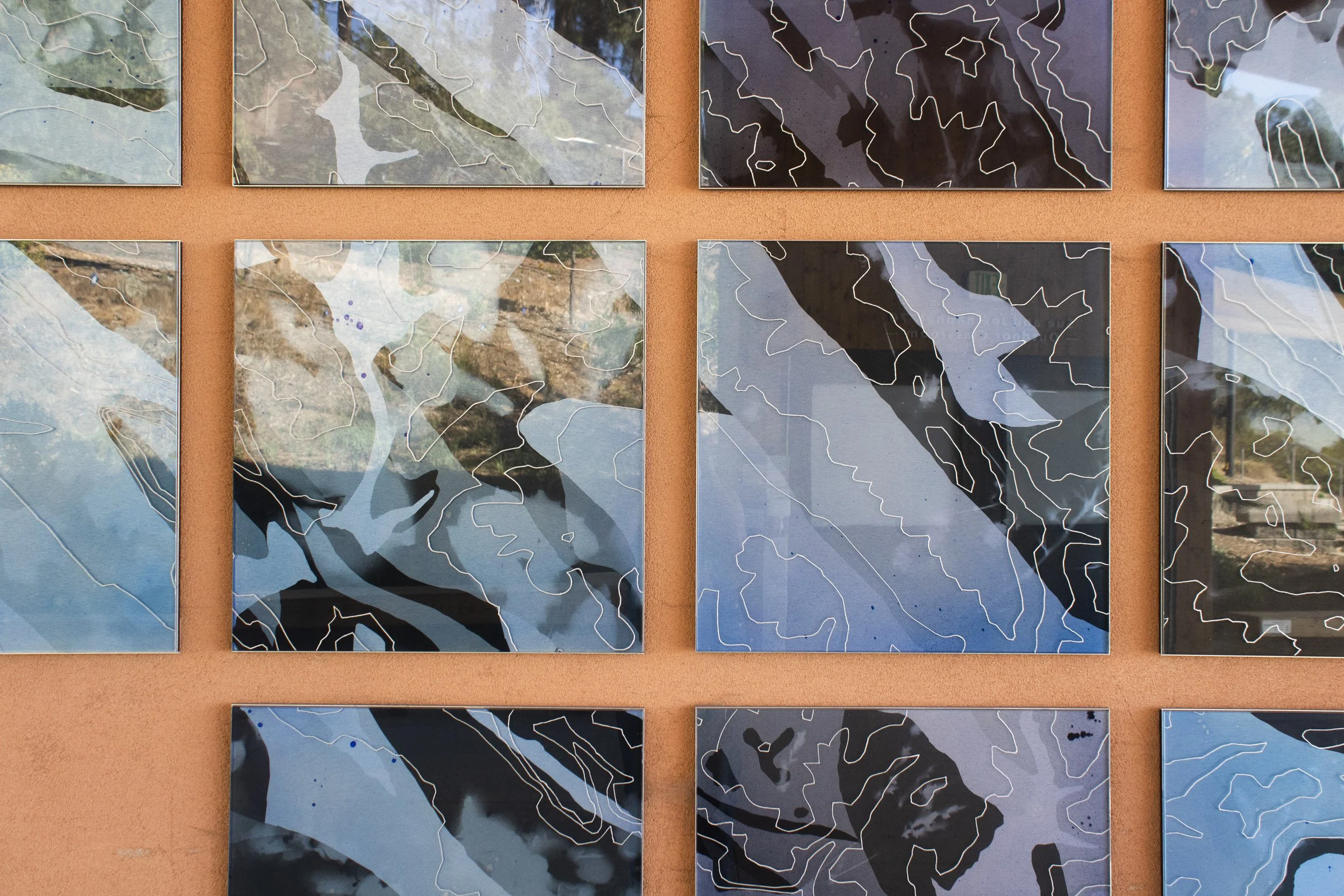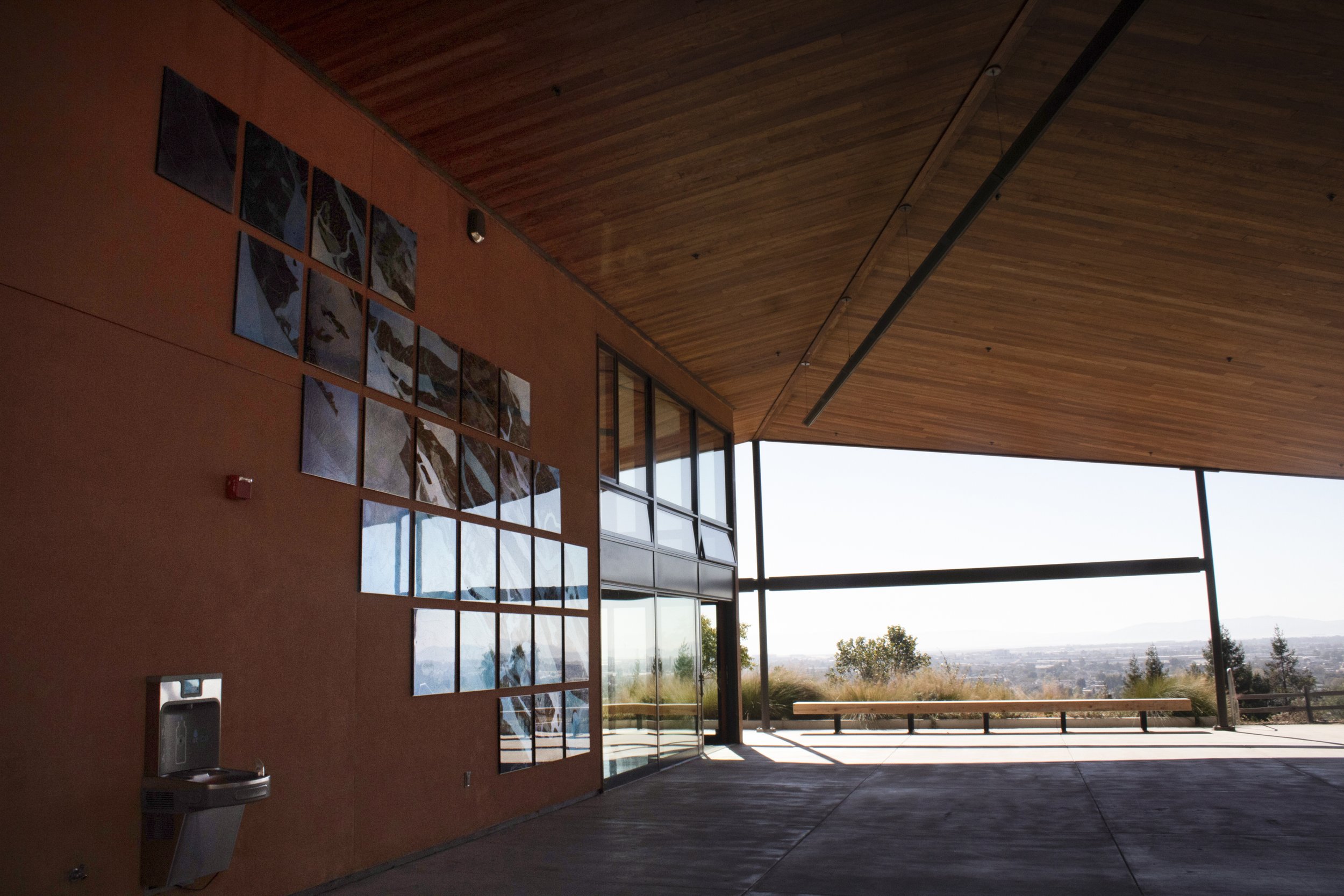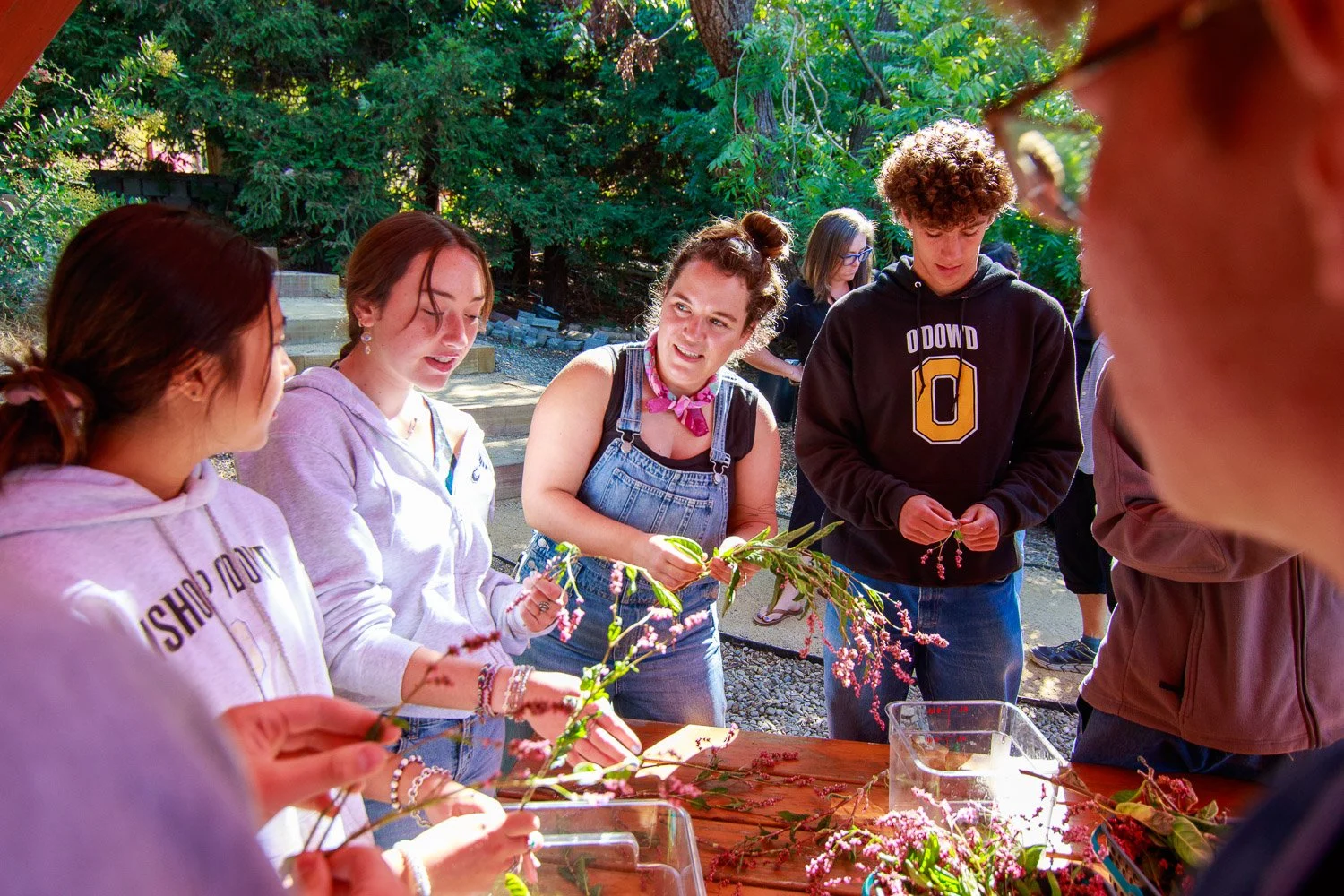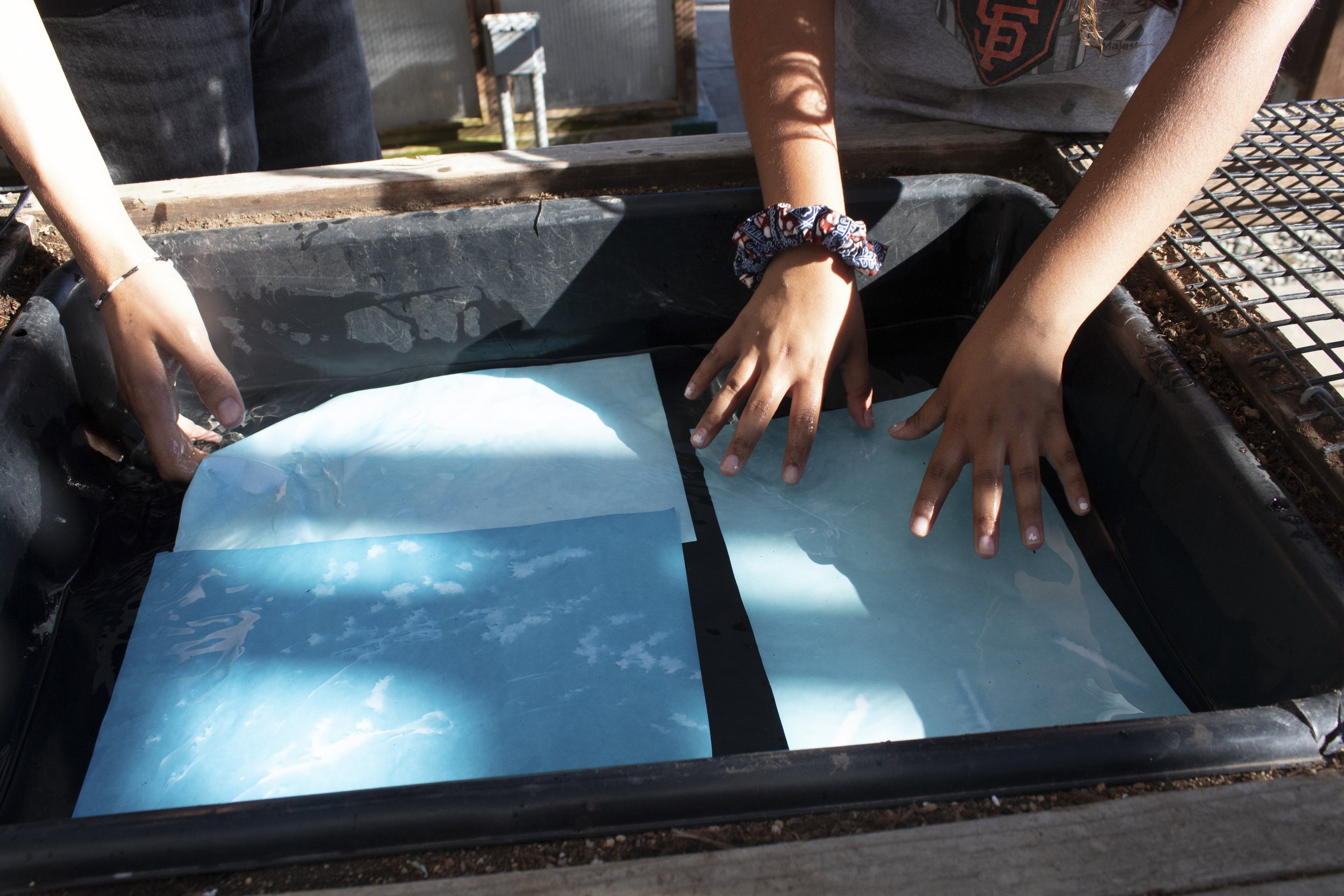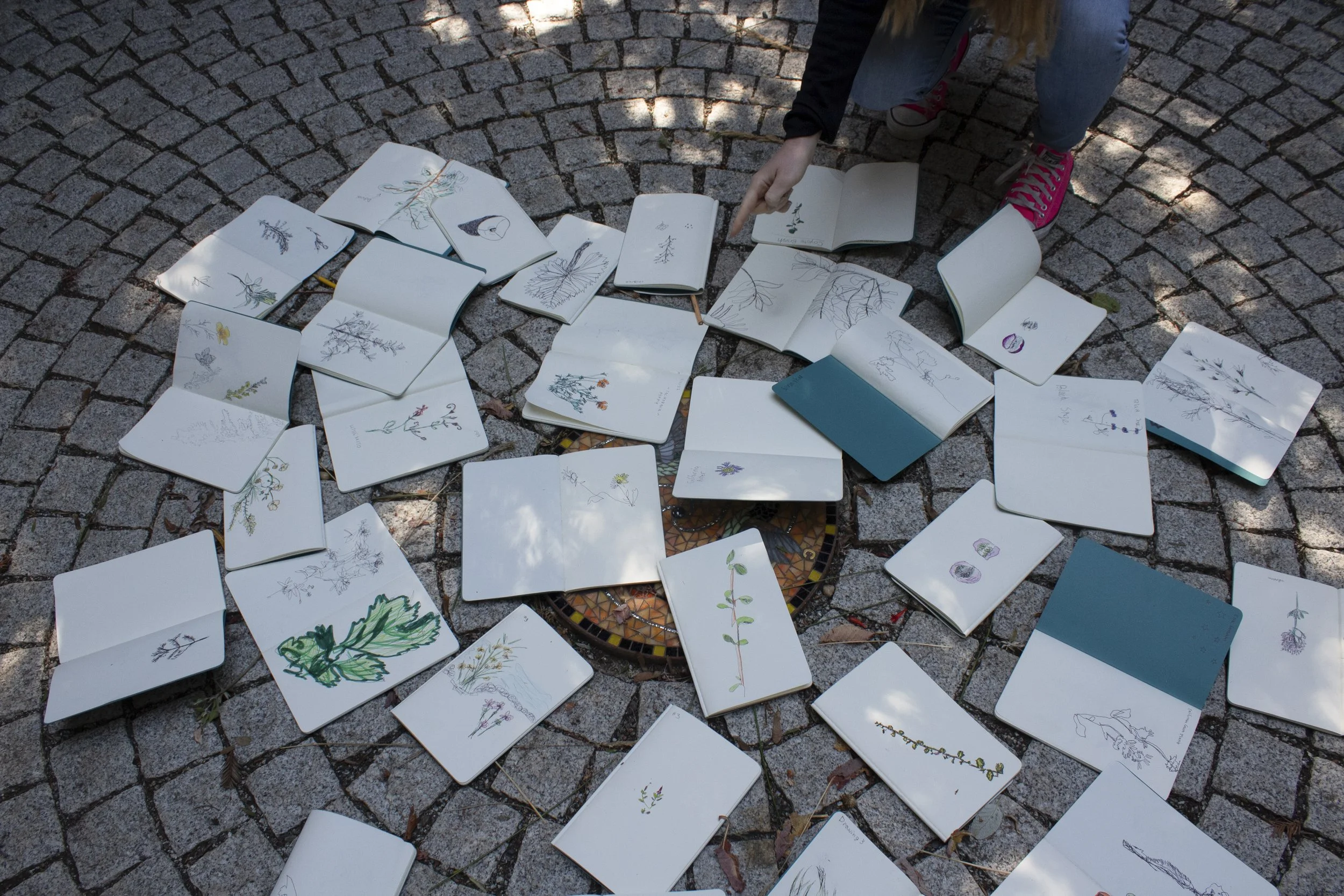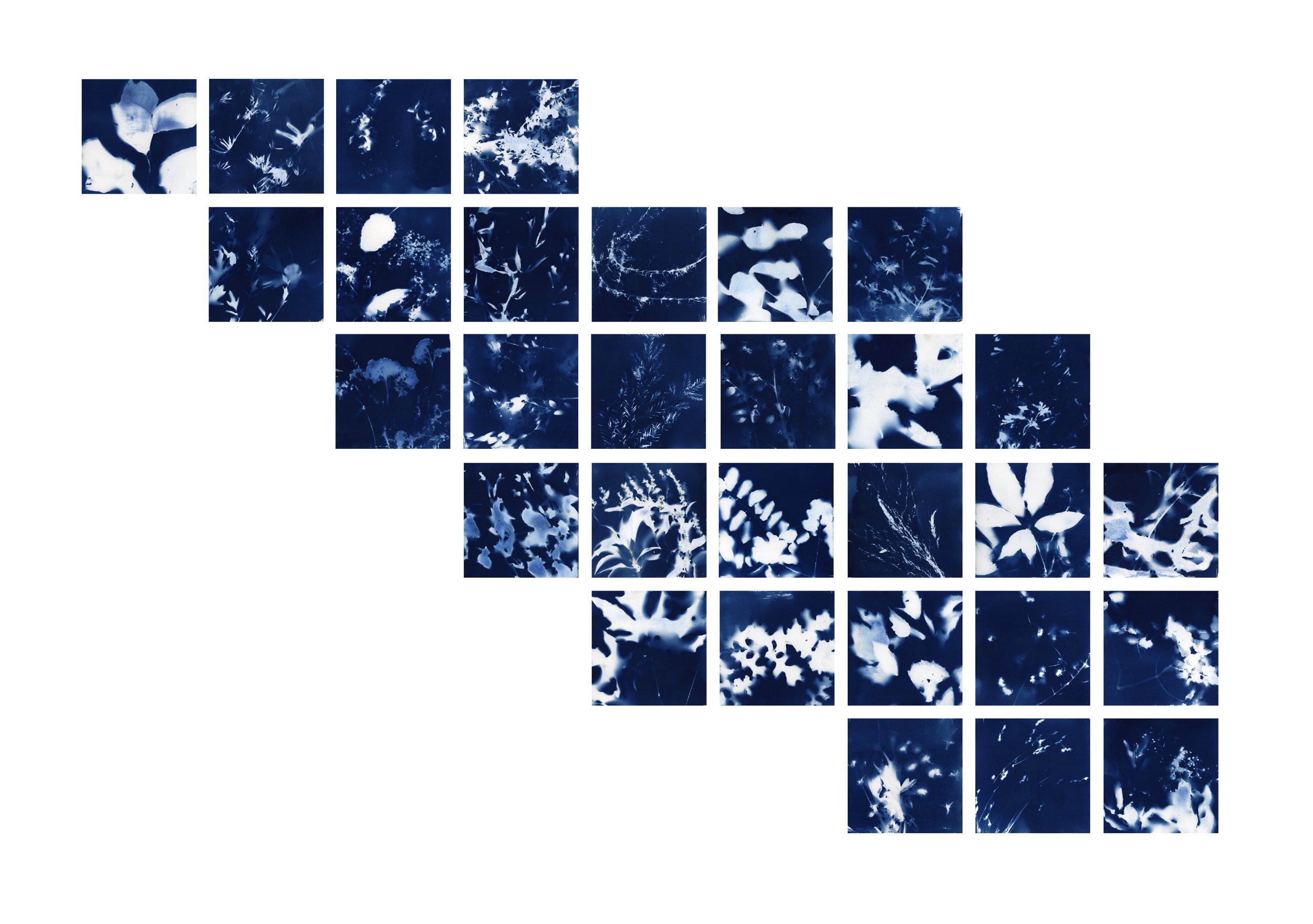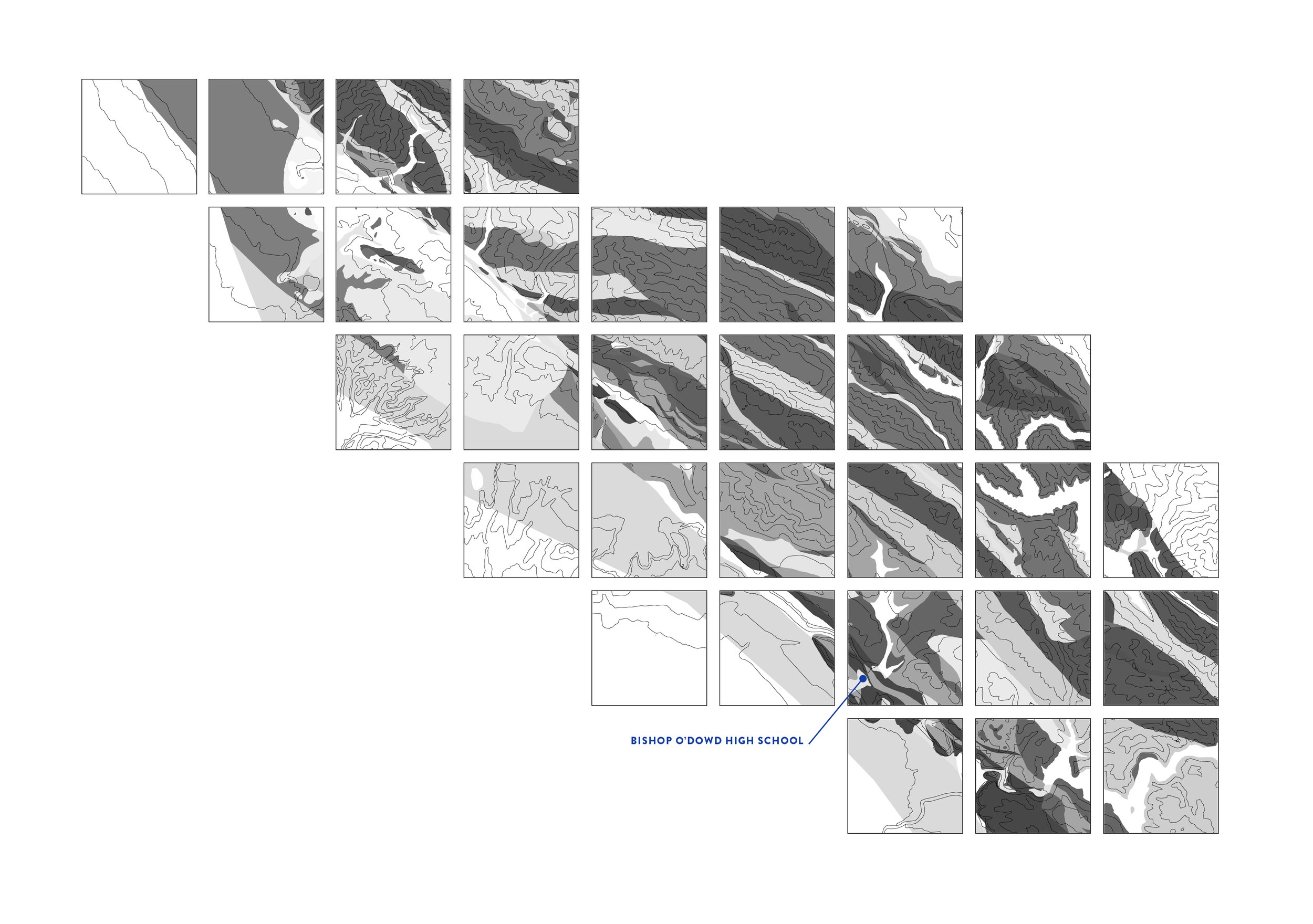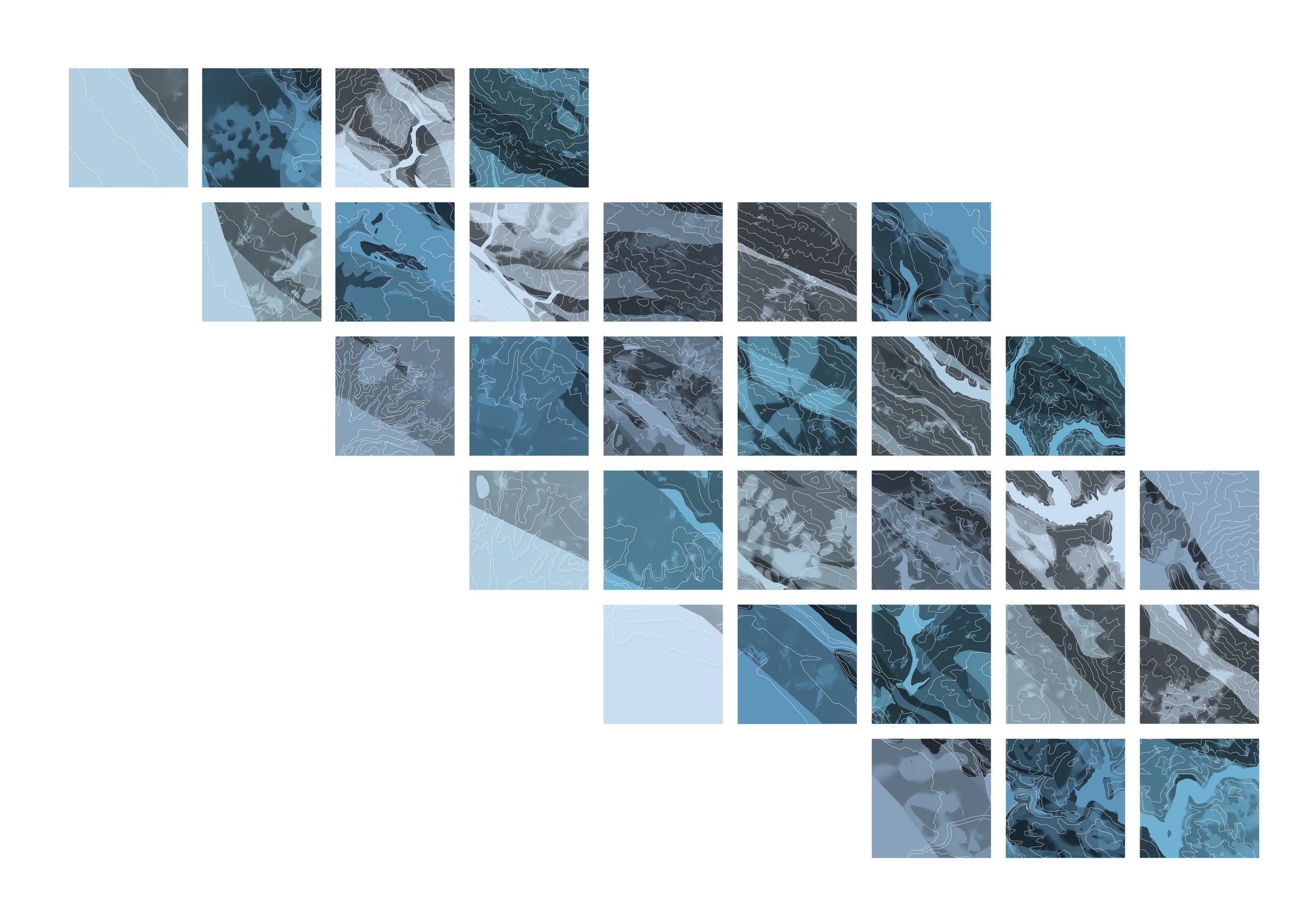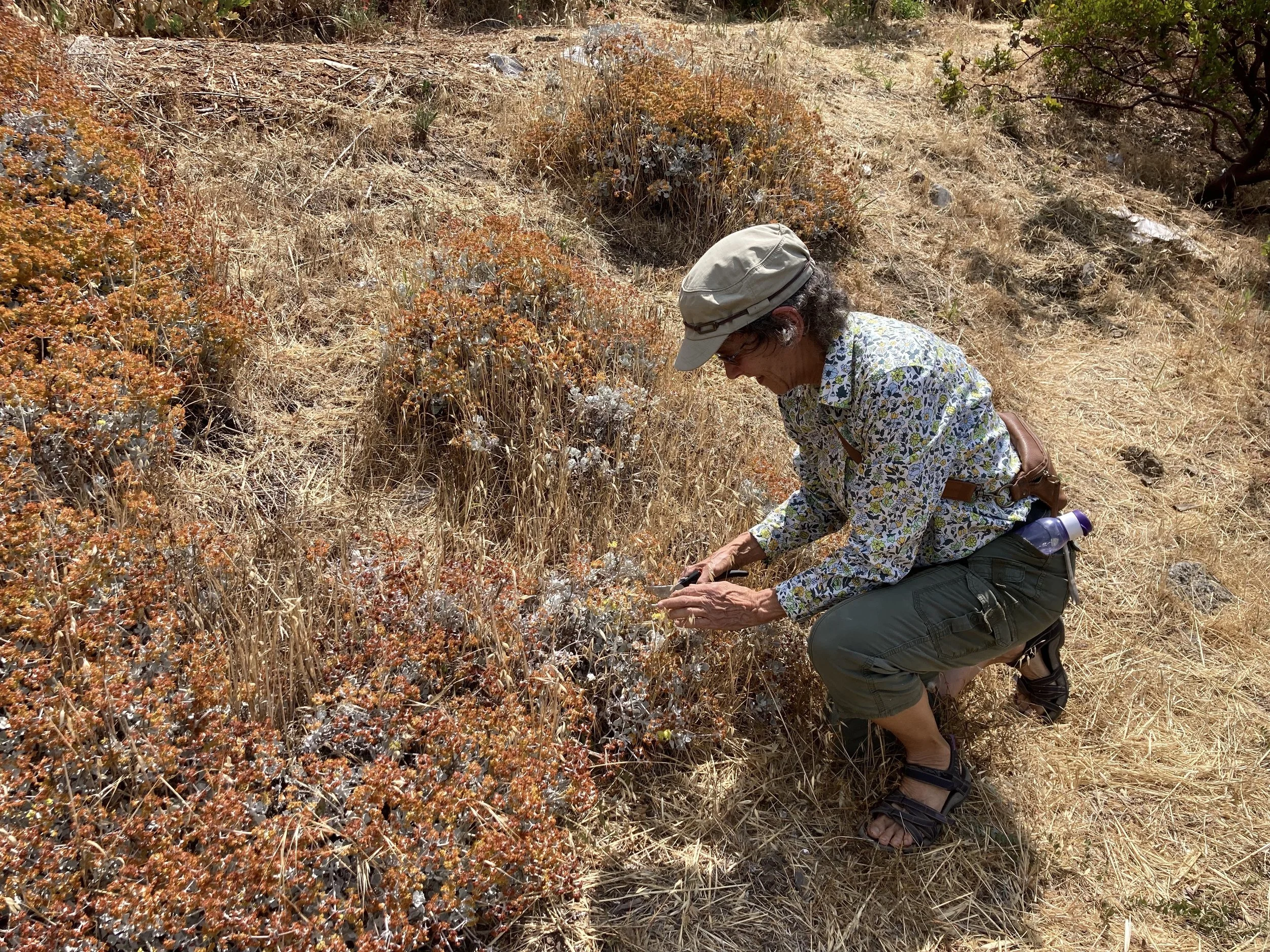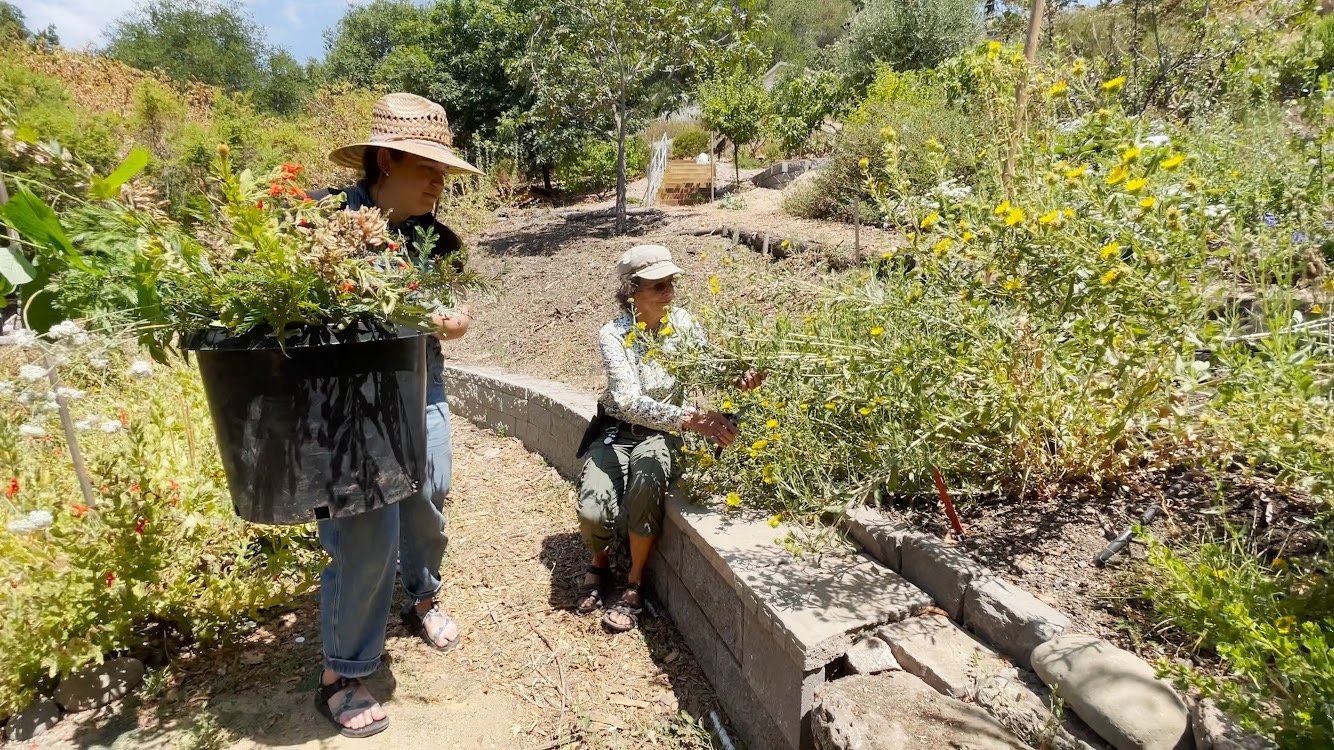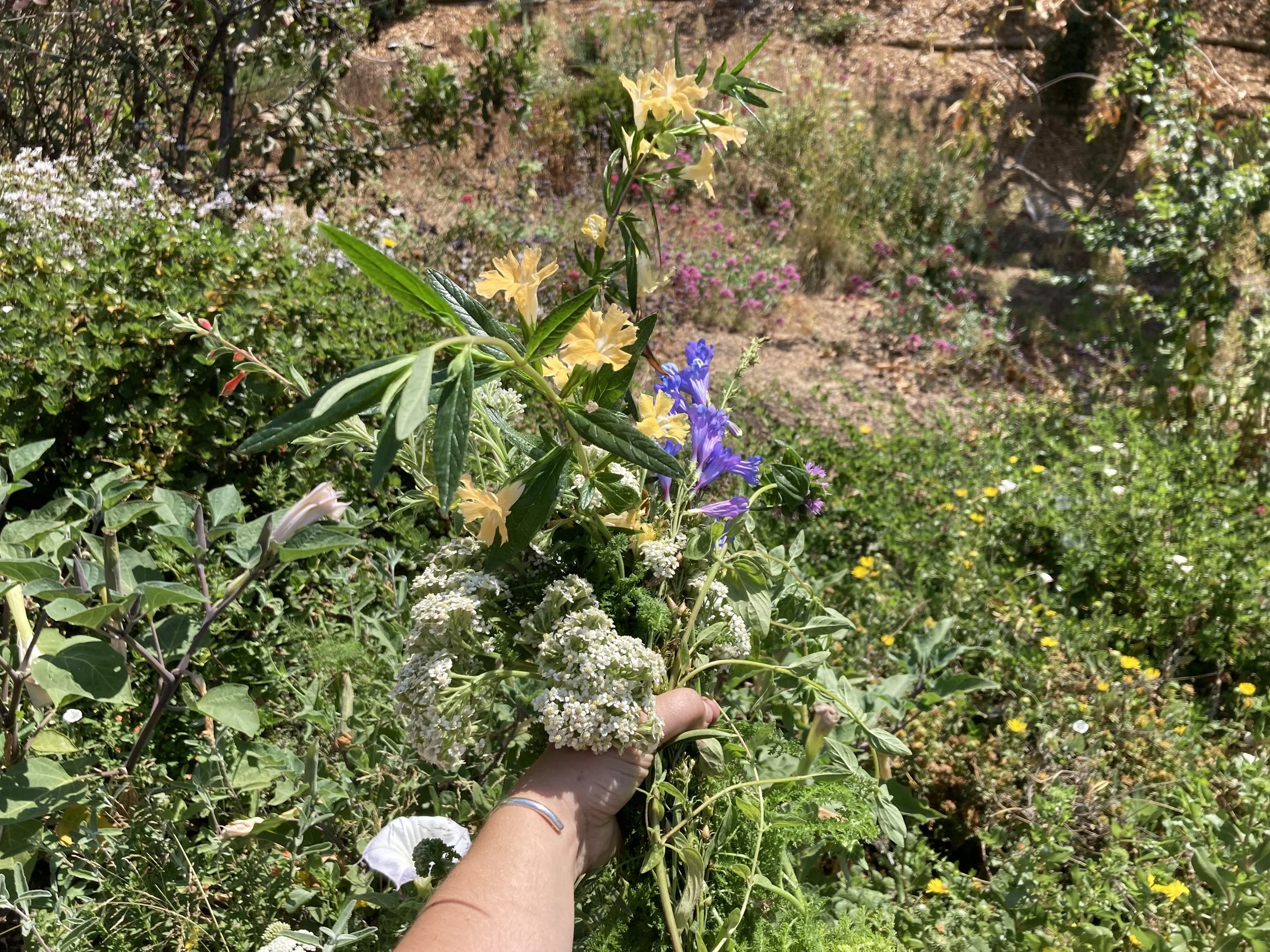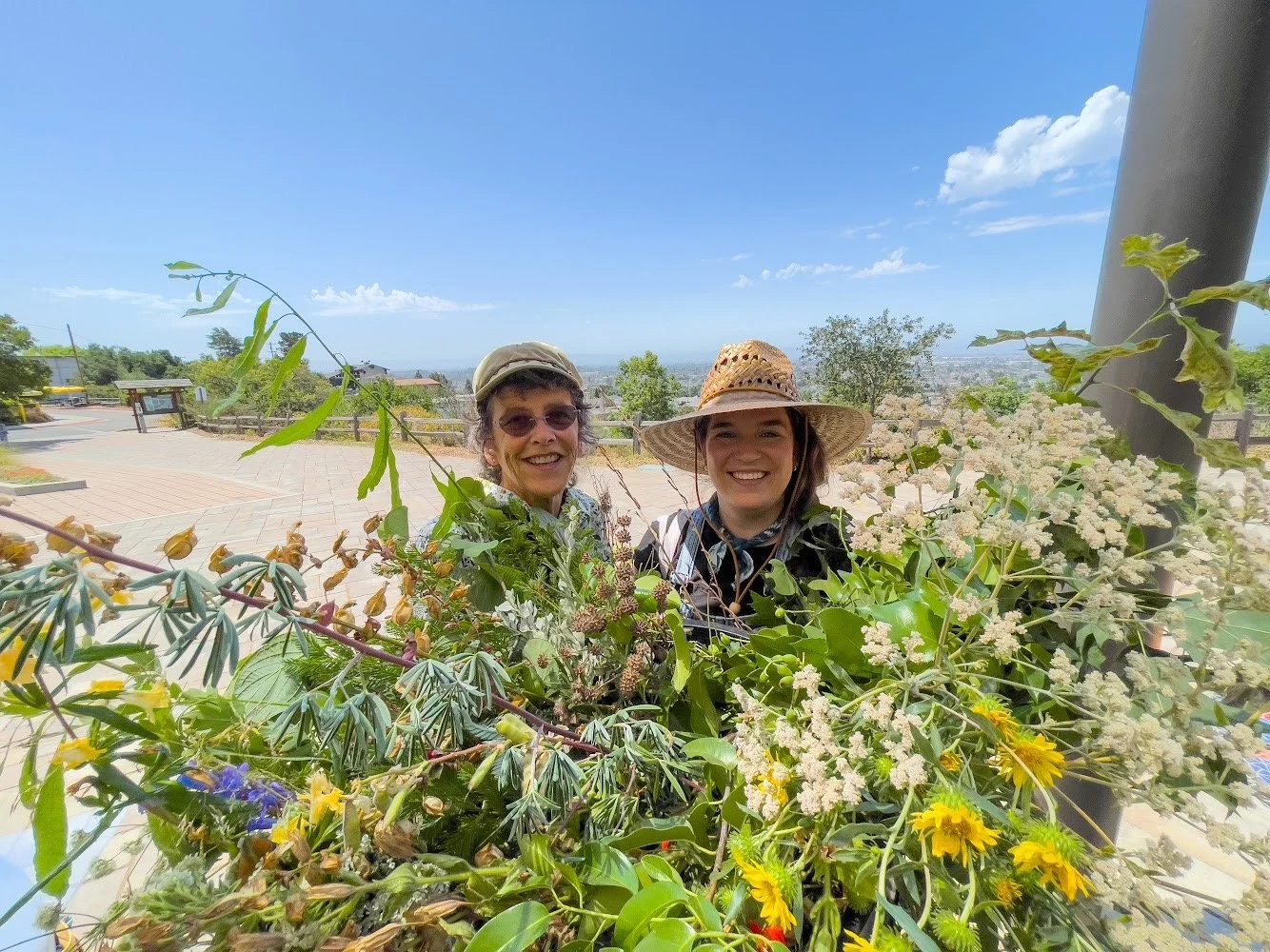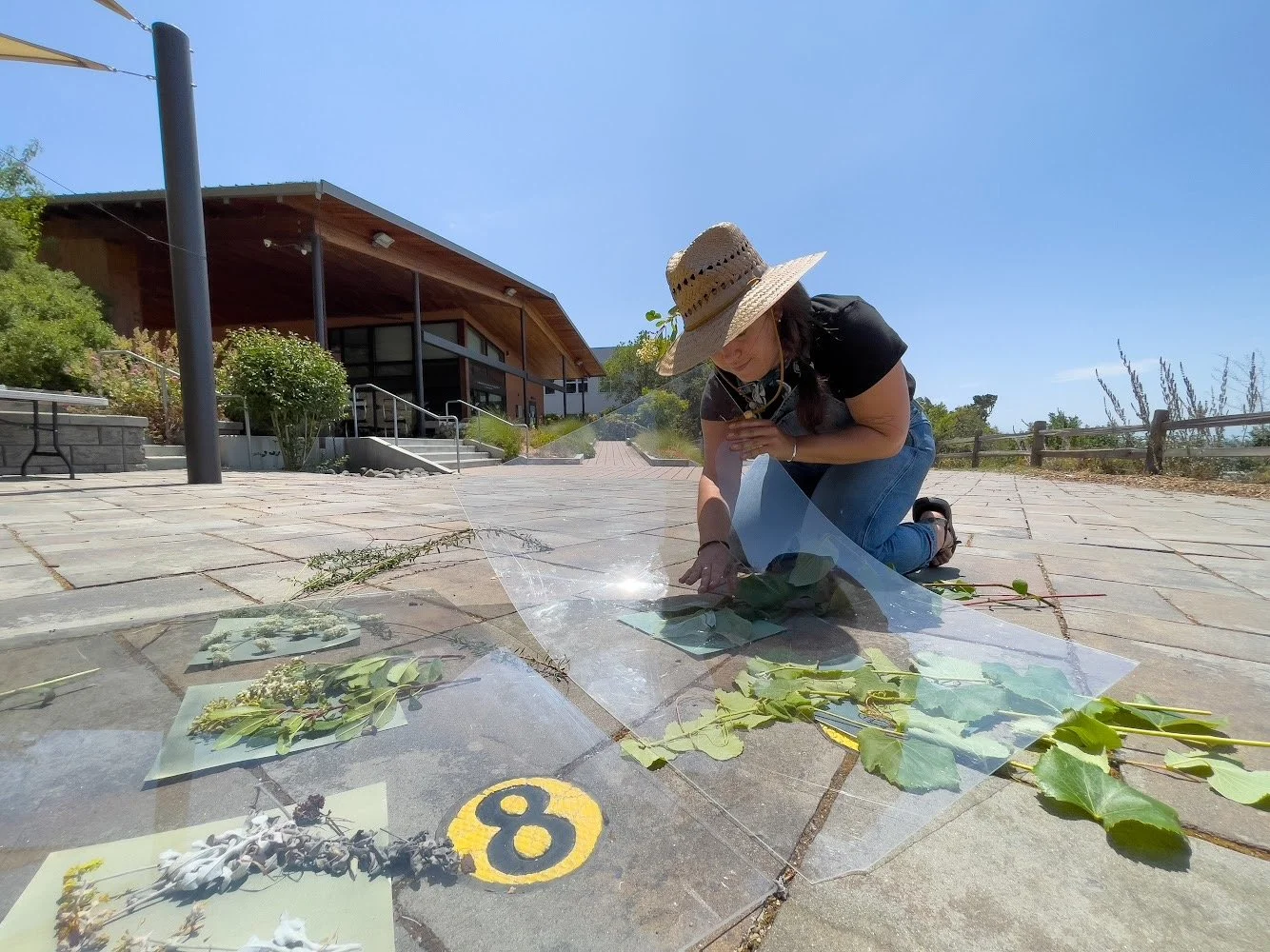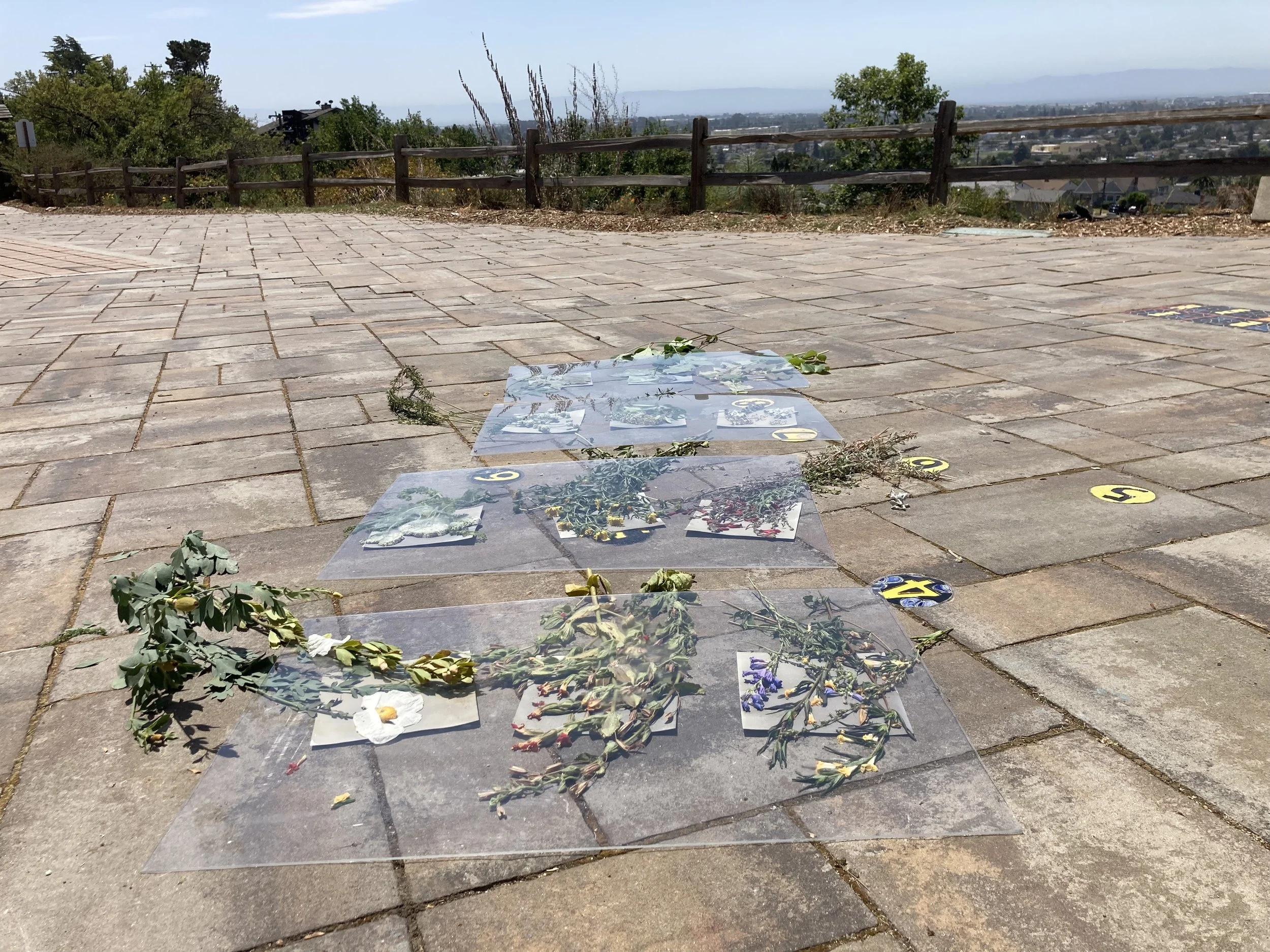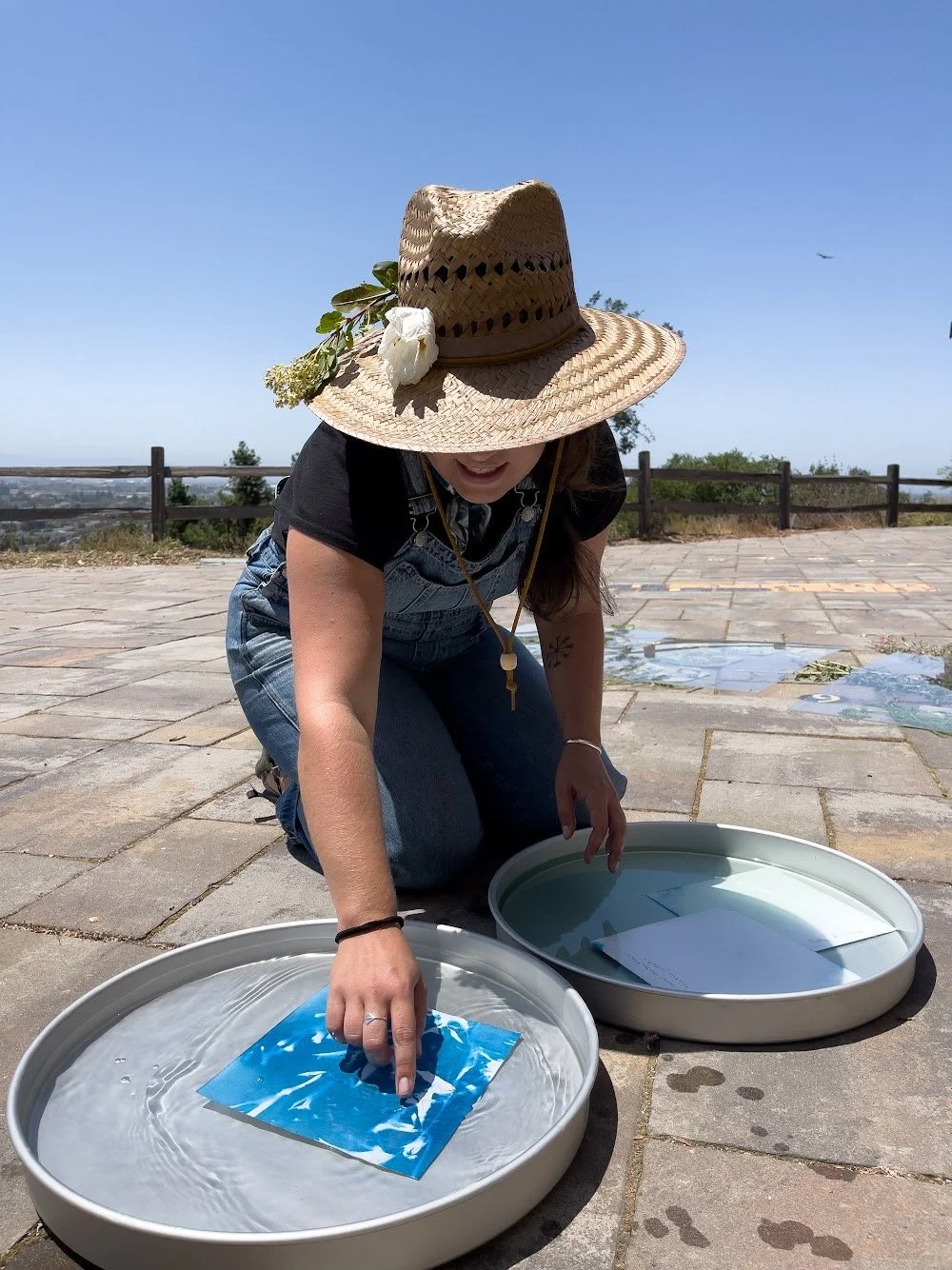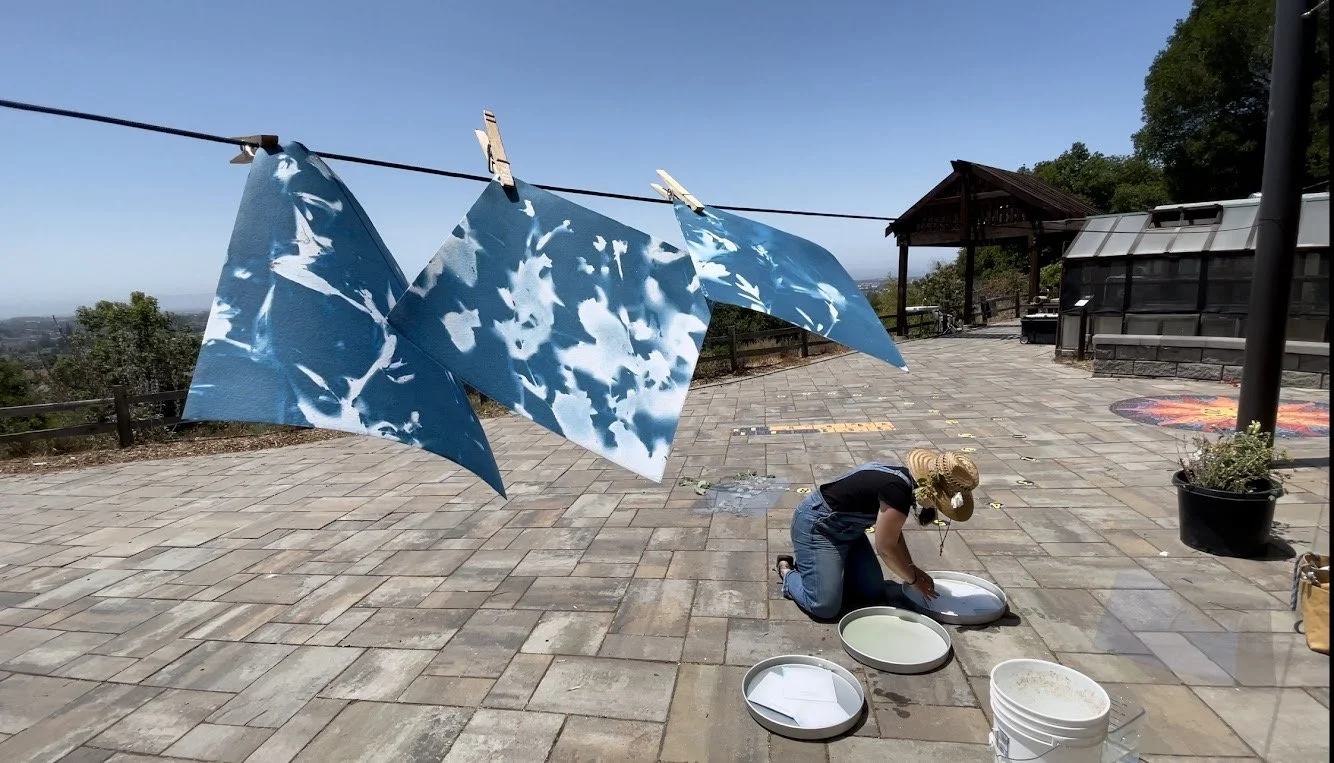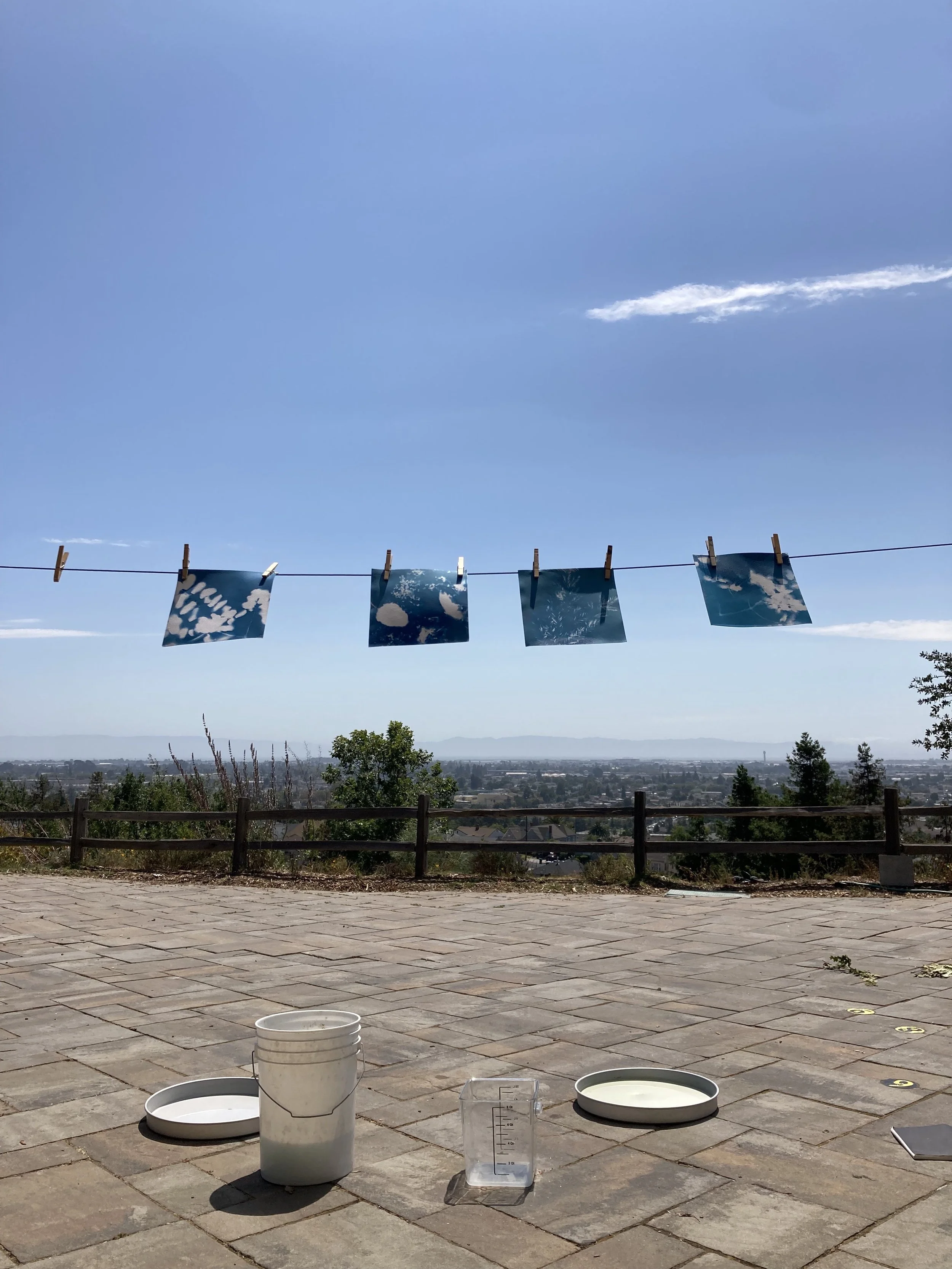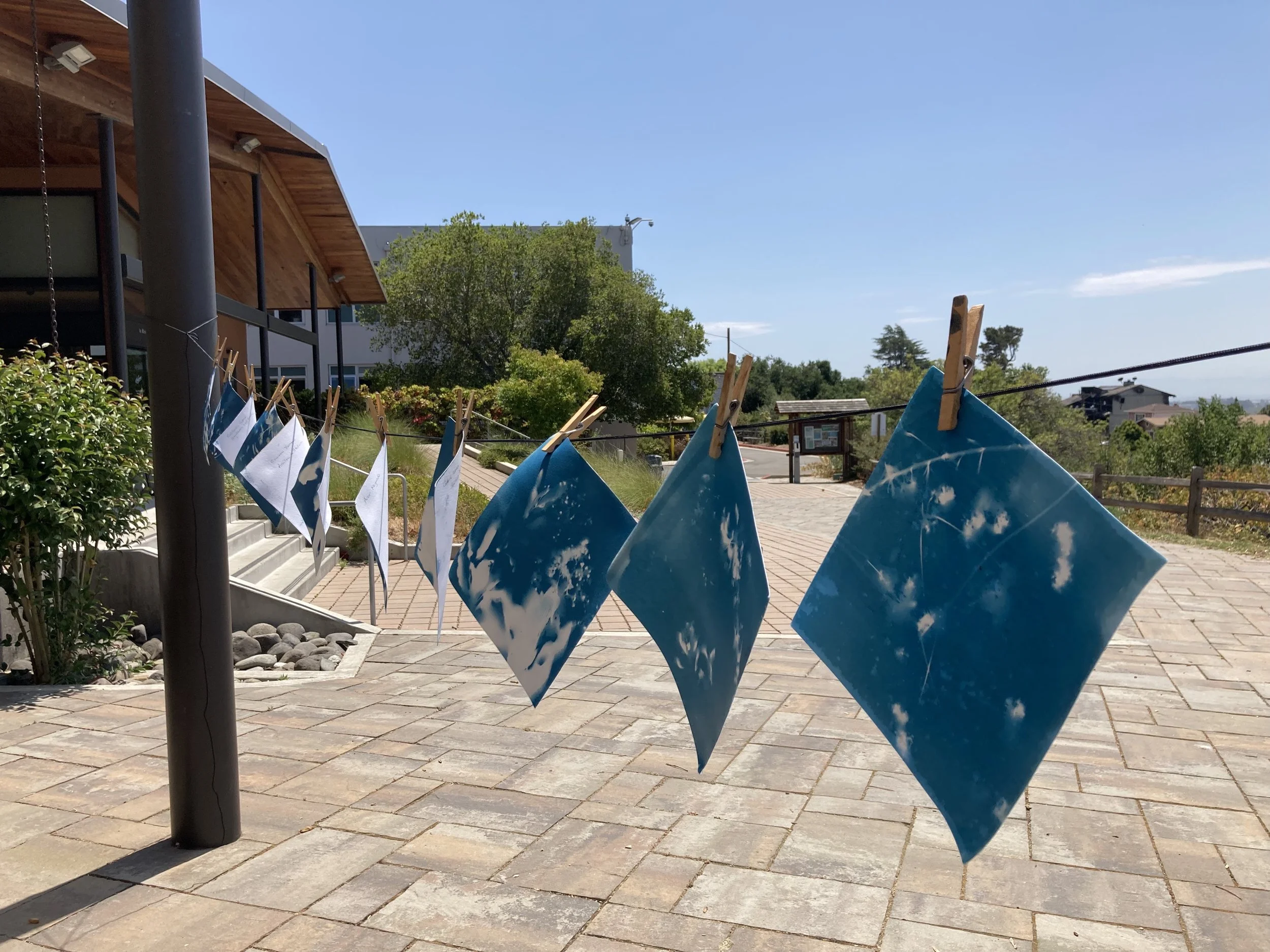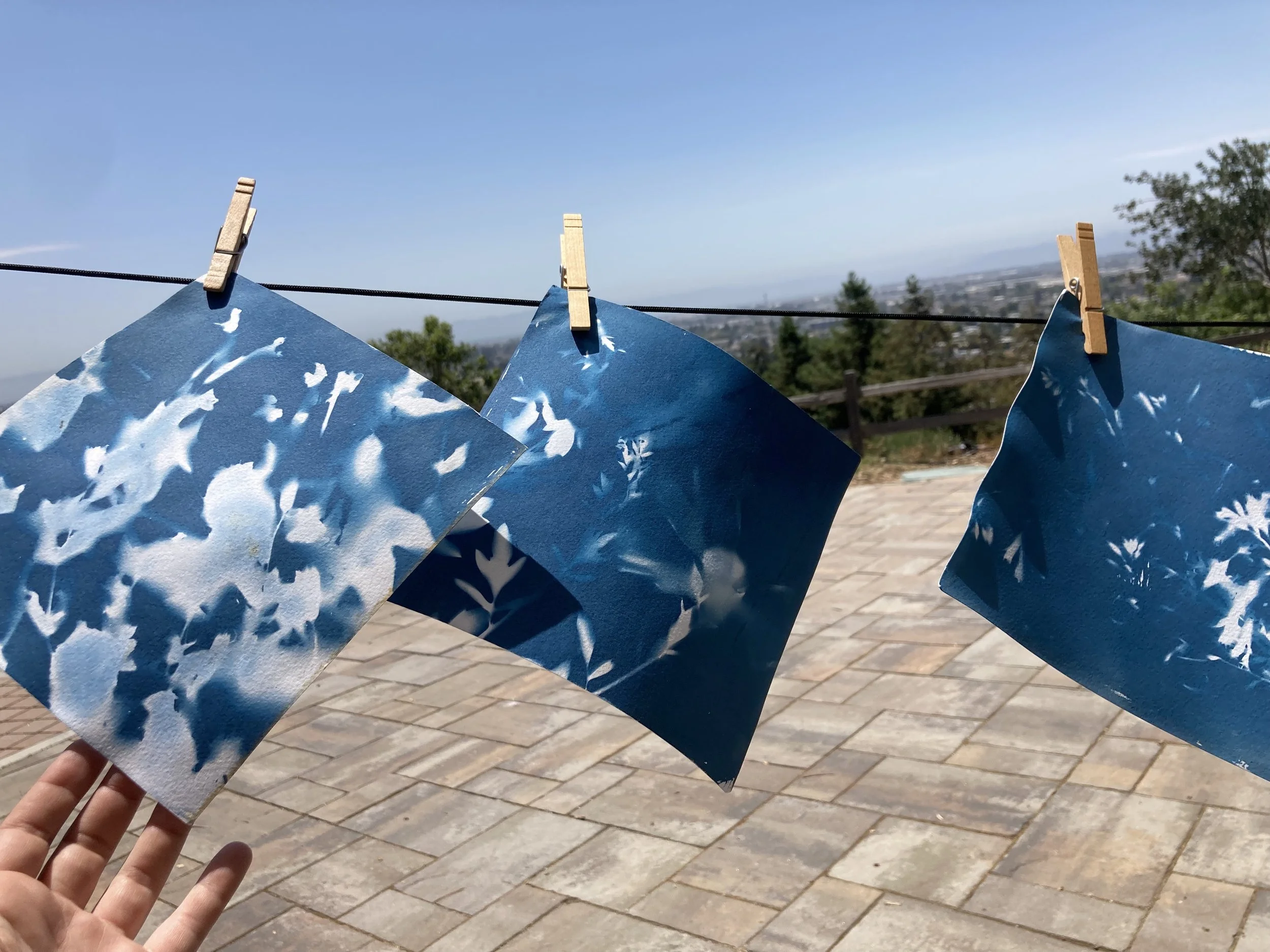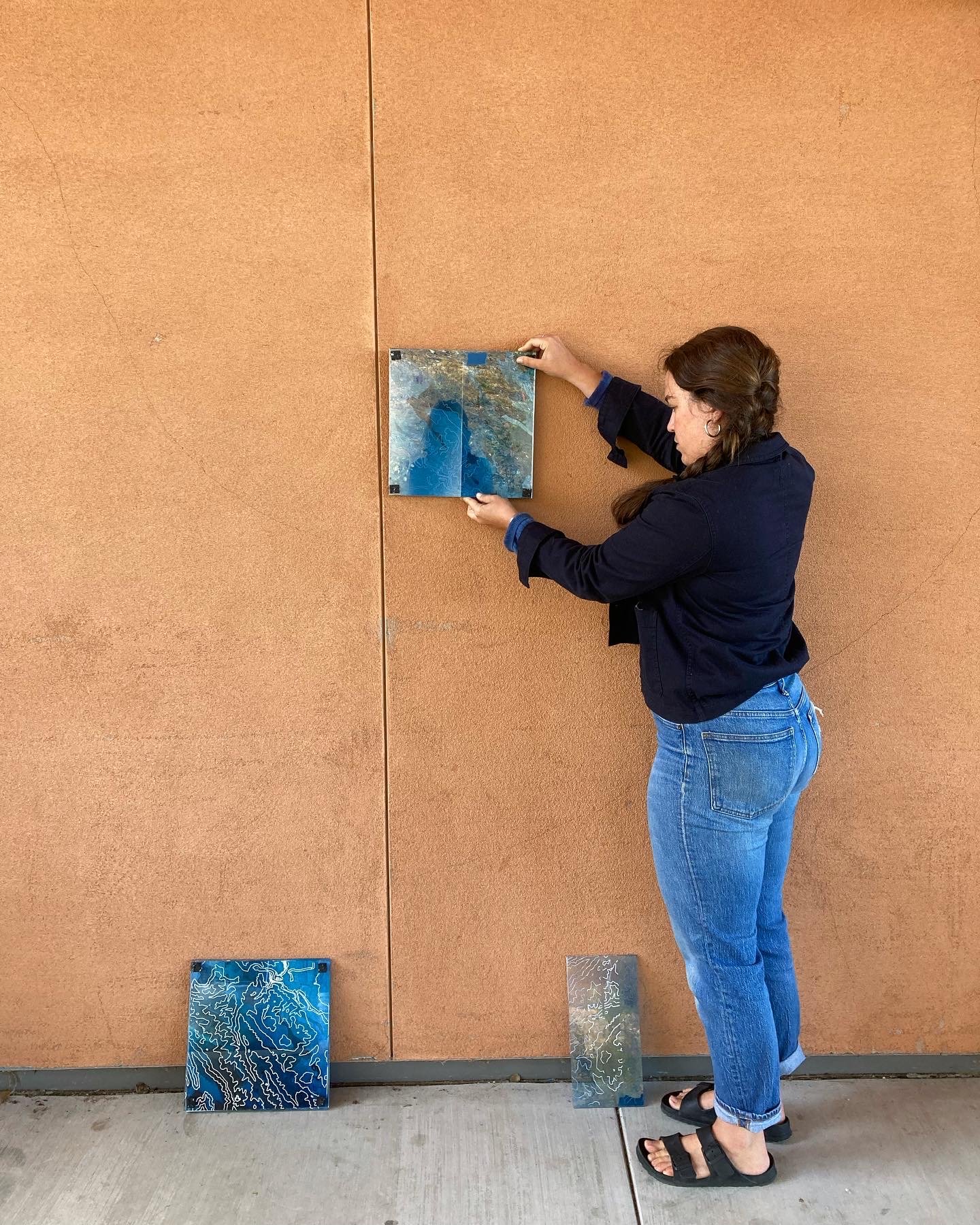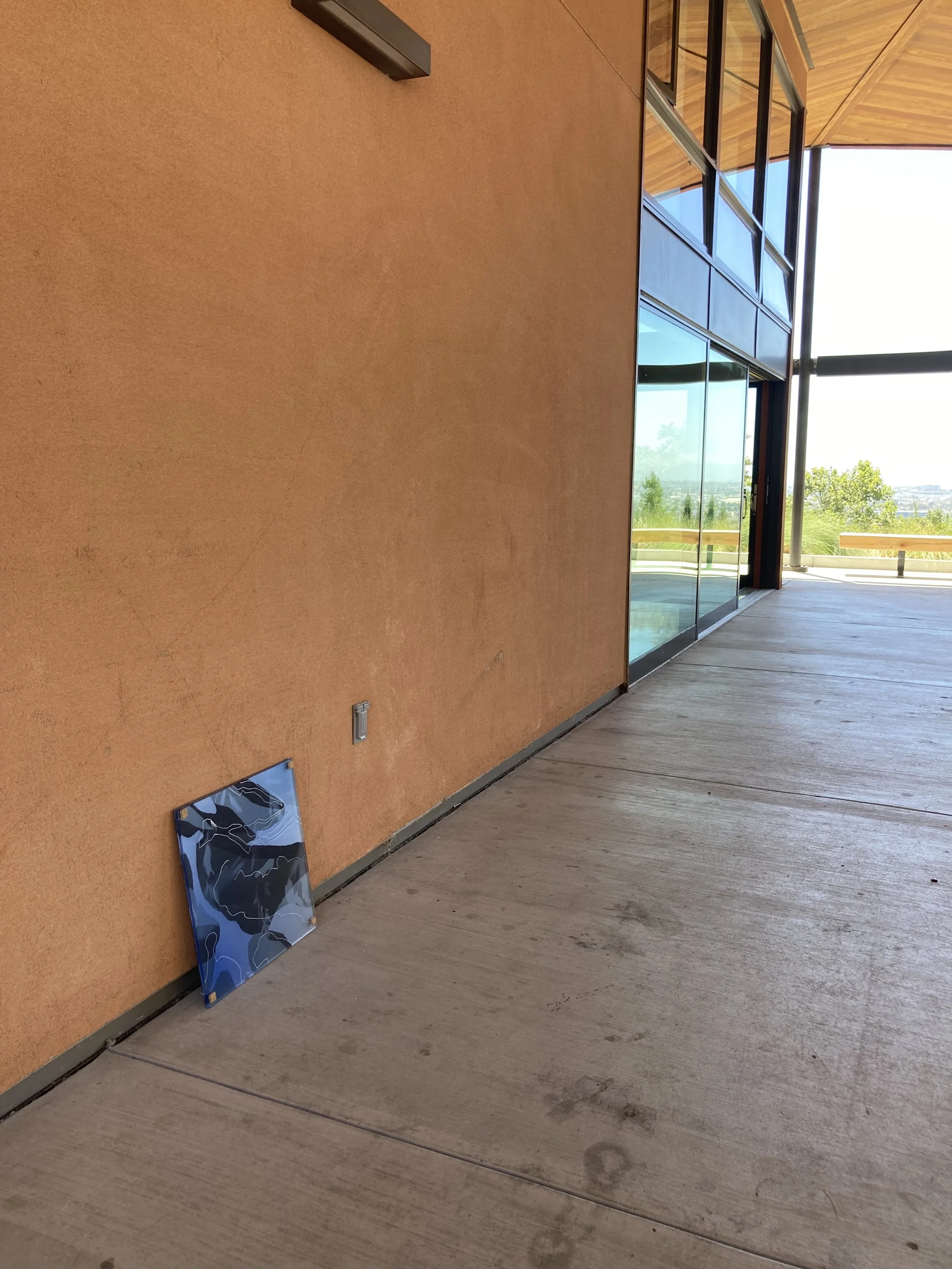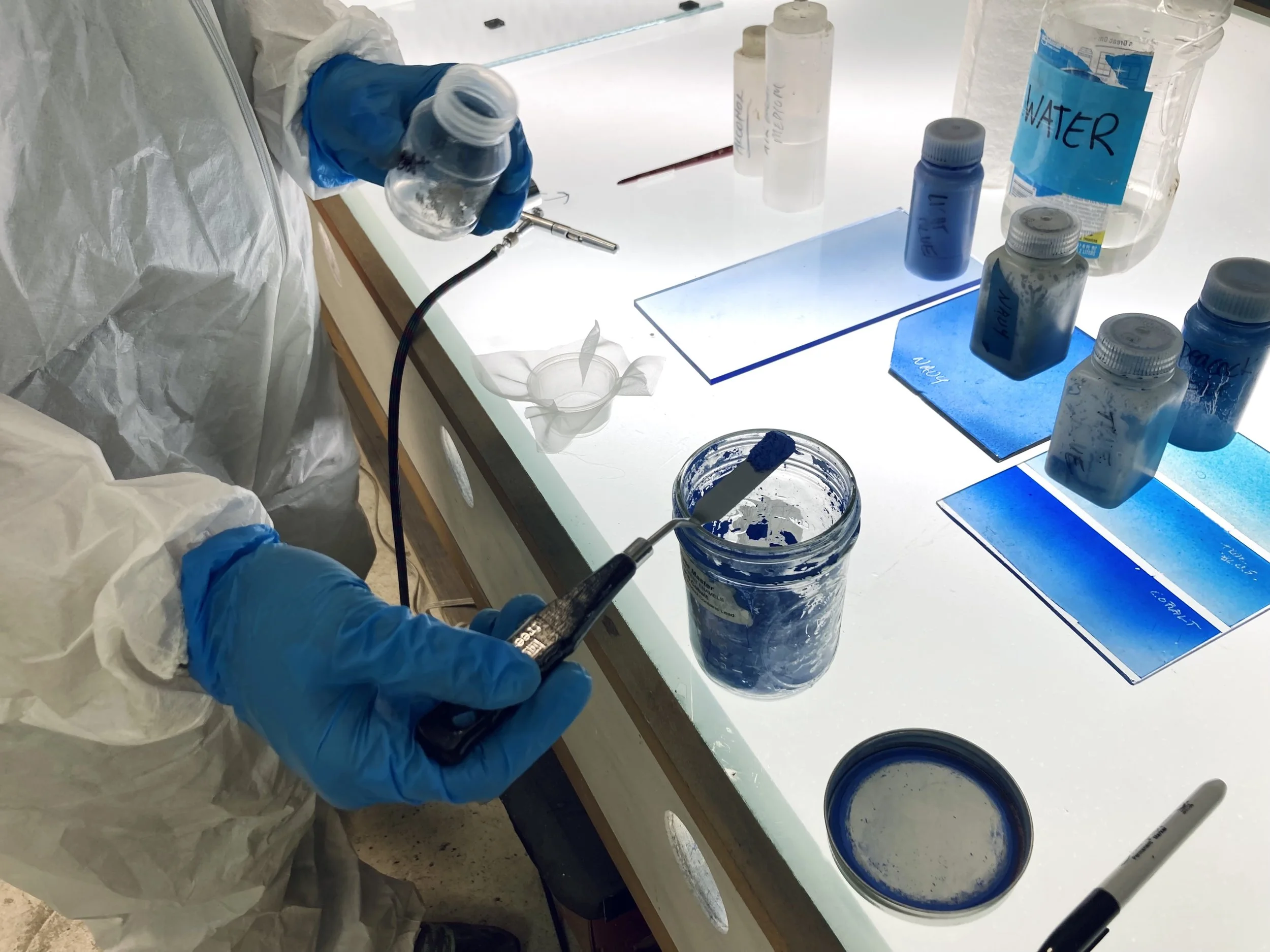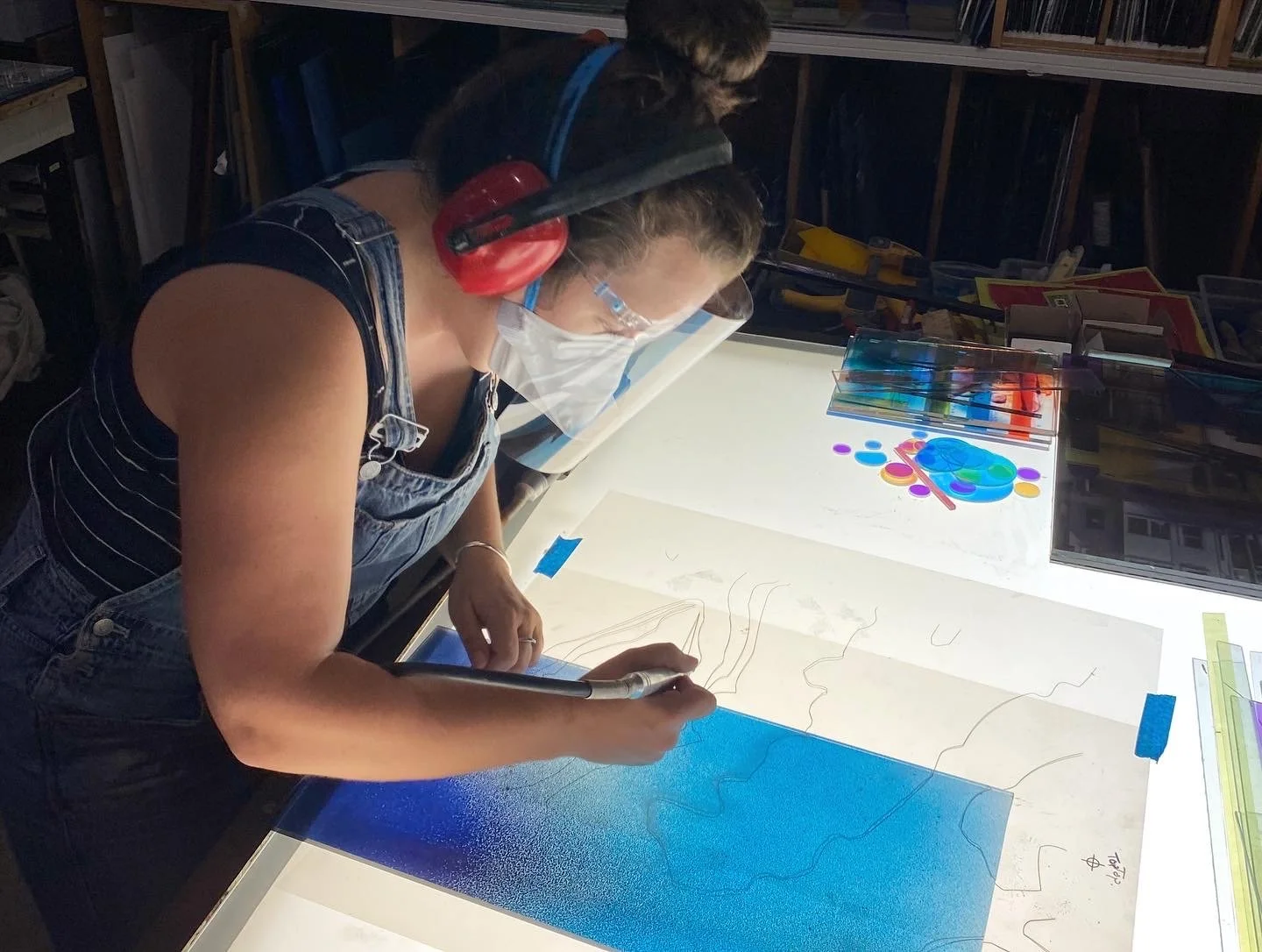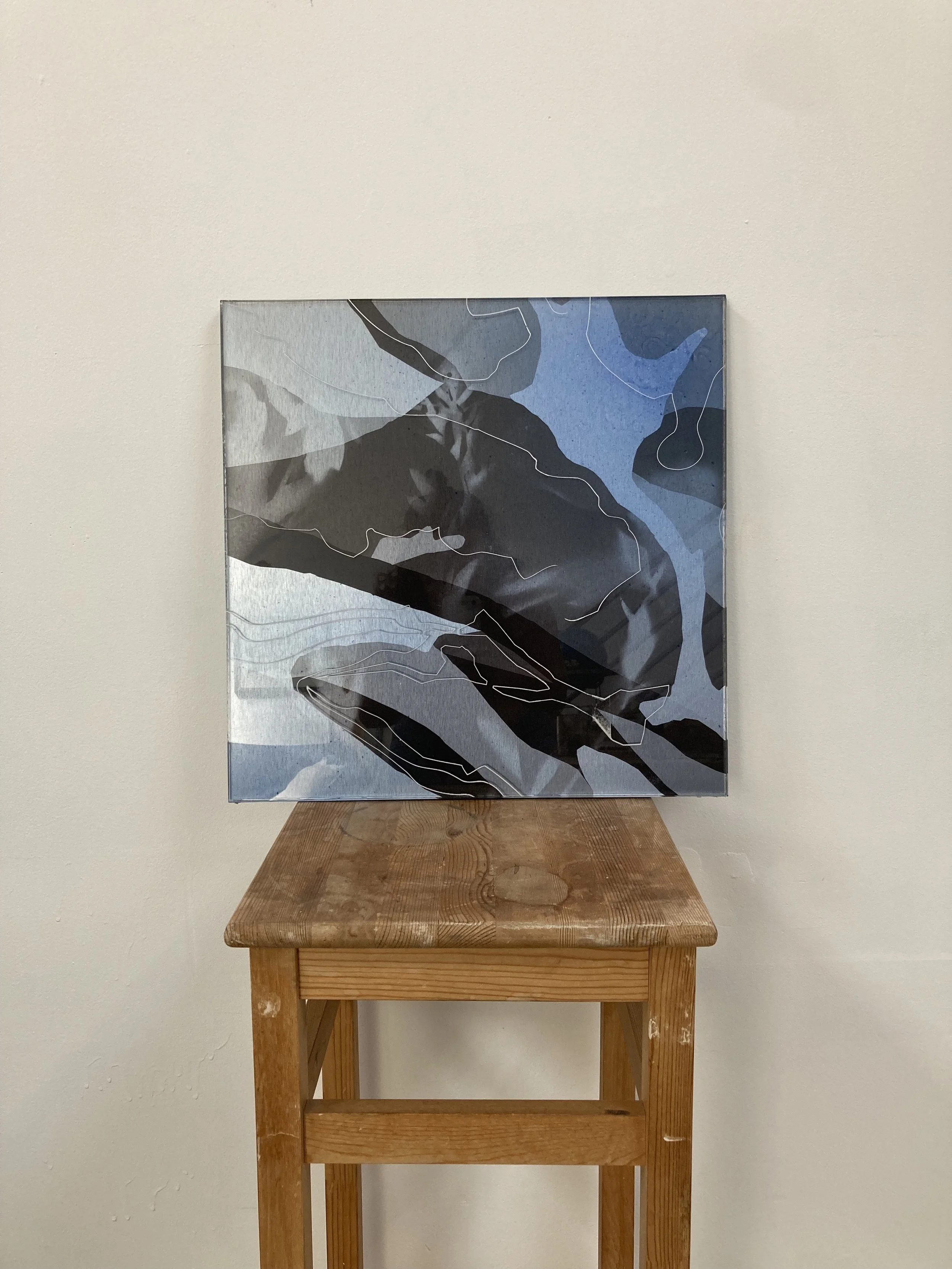public art at bishop o’dowd high school
Atlas (after Anna) is a large-scale public art installation at the Center for Environmental Studies at Bishop O’dowd High School in Oakland, California. The artwork – installed on the facade of the Center for Environment Studies – consists of multiple abstract maps that reflect the school’s unique location amidst the Bay Area’s rich natural systems.
Blending place-based scientific and artistic inquiries, Atlas (after Anna) consists of thirty aluminum panels arranged to depict a geologic map of the East Bay, embedded with images of local botany, and overlaid with painted blue glass and hand-etched topographic line-work. Each panel features an image of a unique native plant from the adjacent Living Lab school garden, together creating a botanical index. These photographic images were printed onsite, using the cyanotype technique pioneered by the 19th-century artist and botanist, Anna Atkins. The blue painted glass references the cyanometer, an 18th-century tool that utilizes squares in a blue gradient to measure the color of the sky.
Atlas (after Anna) highlights ways that human and natural systems are entangled. It offers a spiritual, scientific, and artistic take on map-making; one that draws upon the mission of the Living Lab and Center for Environmental Studies as a place for multi-disciplinary learning, contemplation, and kinship.
educational engagement
Fall 2022
Developed in collaboration with Isabel Rodriguez-Vega, Sustainability Programs Manager, and Michael Downs, Director of Justice and Kinship, this series of workshops guided students through interdisciplinary learning in the Living Lab school garden, exploring how scientific study and artistic expression can foster care, curiosity, and community. Our guiding questions were: What can creative practices, close looking, and co-production teach us about caring for our environment, honoring the land and its histories (both human and geologic), cultivating community care, and working towards social and environmental justice?
design + development process
Fall 2020 – summer 2021
Installation mock-up
Site-Specific prints, Summer 2021
Working on site with longtime faculty and Living Lab co-founder, Annie Prutzman, we made 30 different cyanotype prints of native plants from the school garden, which are then digitally embedded in the map design (one plant per panel).
Fabrication Process, Fall 2021
I worked closely with local master artists Dorothy Lenehan and Kimberly Jackson of Lenehan Architectural Glass in Oakland to test materials for the final fabrication.




